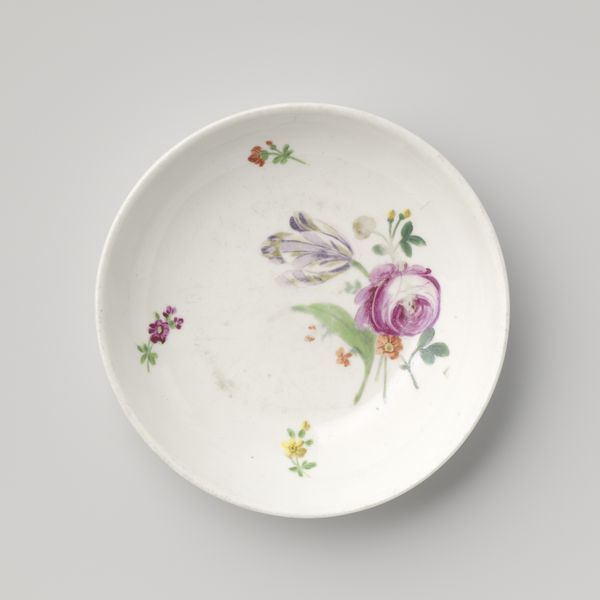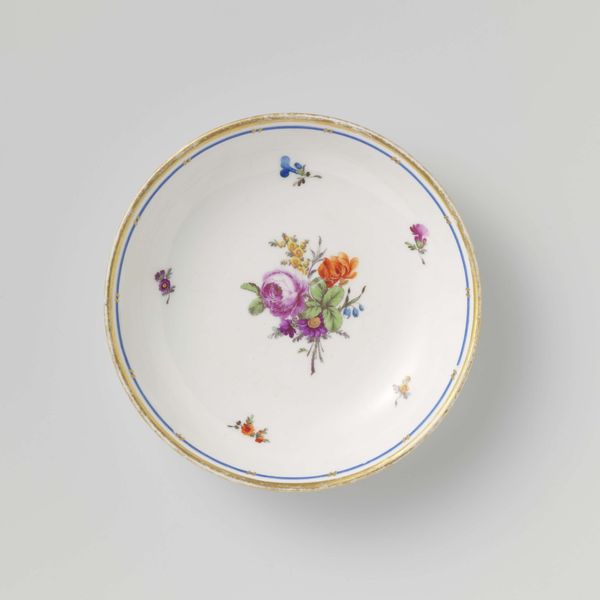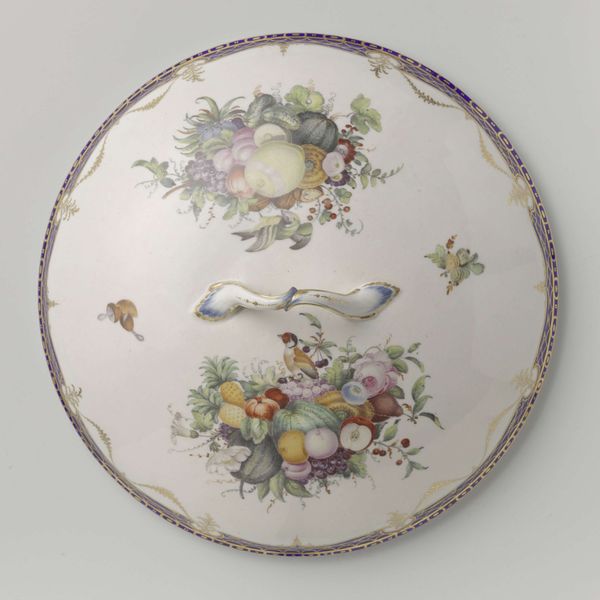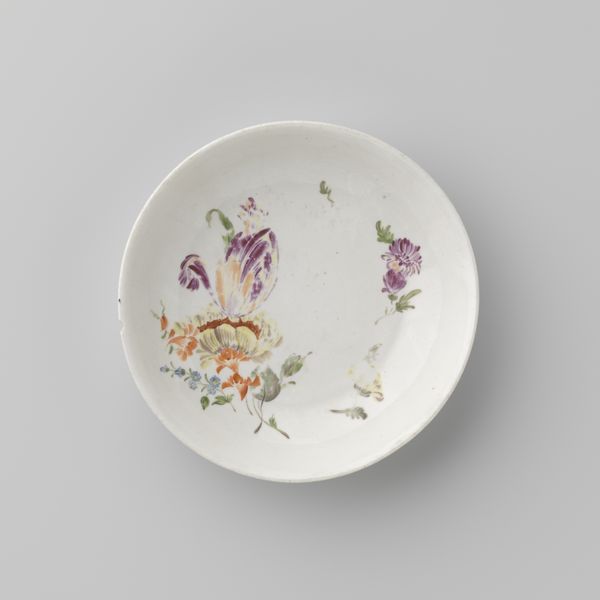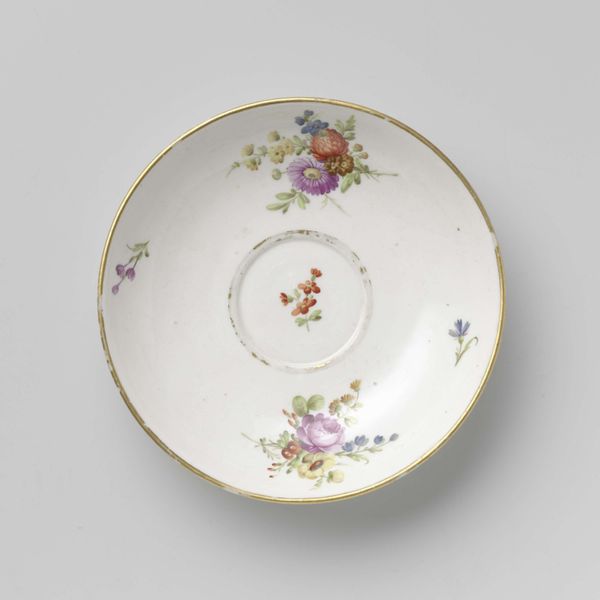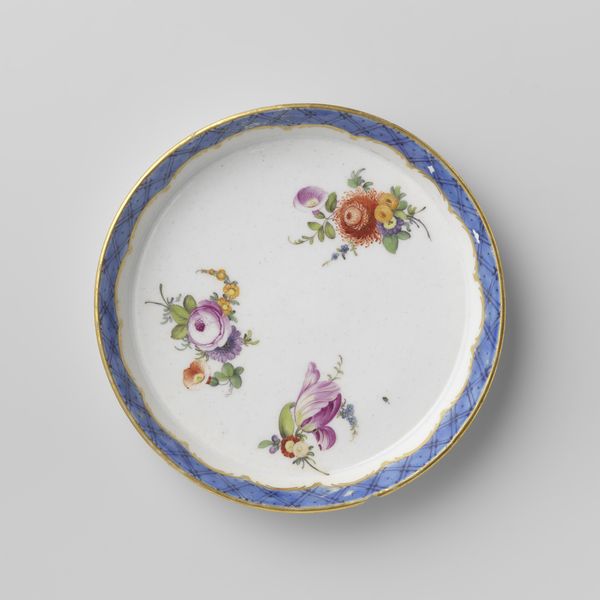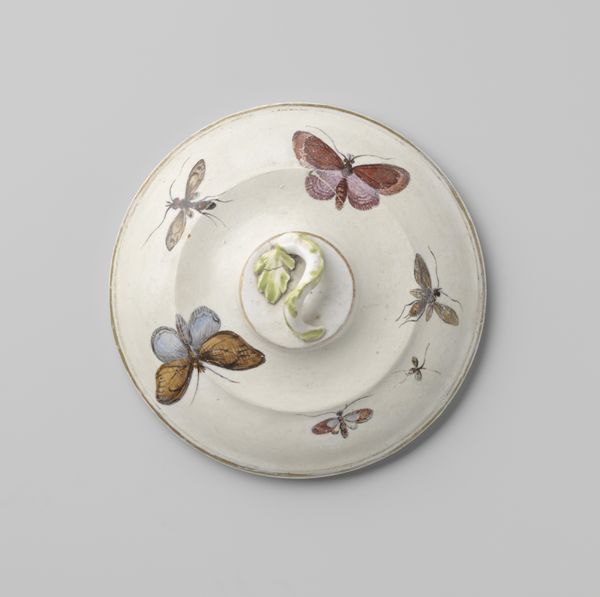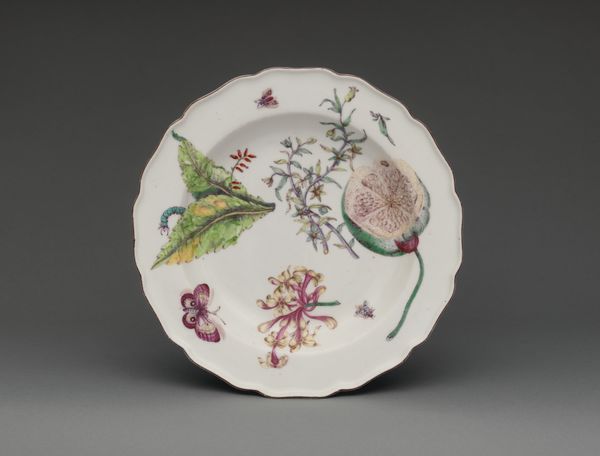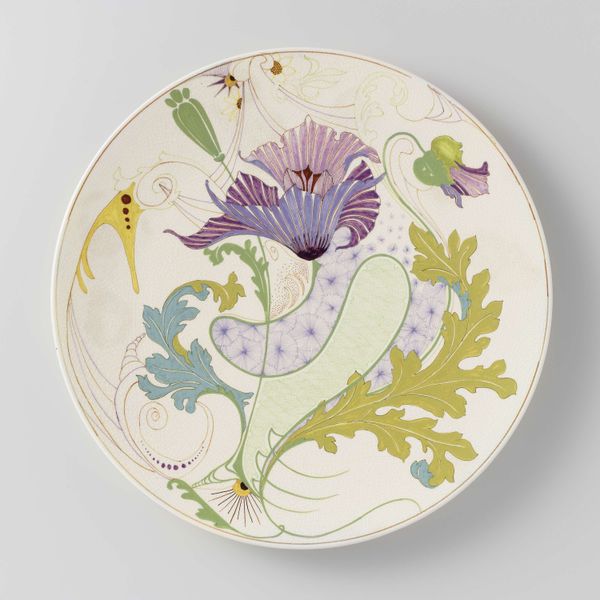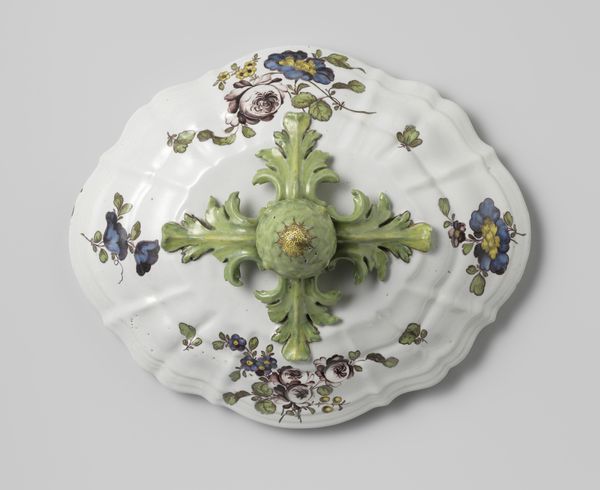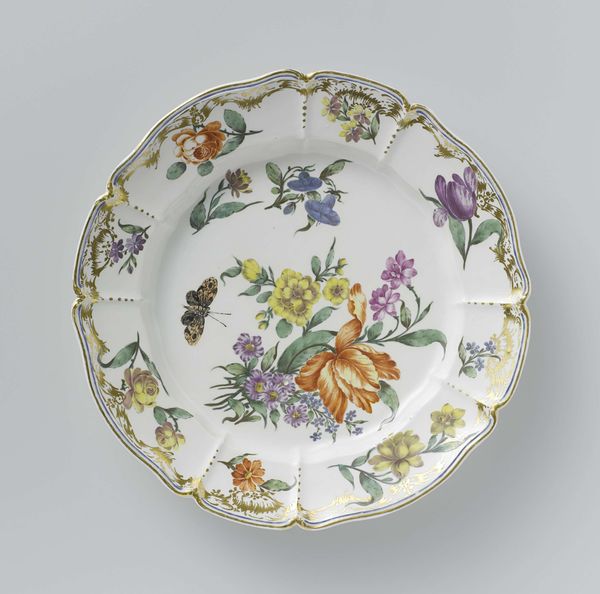
Deksel behorend bij een terrine, veelkleurig beschilderd met een bloemboeket 1760 - 1770
0:00
0:00
johanvankerkhoff
Rijksmuseum
ceramic
#
ceramic
#
decorative-art
#
rococo
Dimensions: diameter 19 cm, height 6 cm
Copyright: Rijks Museum: Open Domain
Curator: Let’s take a closer look at this ceramic lid for a terrine, currently held at the Rijksmuseum. It dates back to the 1760s-1770s. The object features vibrant, polychrome decorations in a style reminiscent of Rococo. Editor: It’s visually so playful and rather elegant! The colours are just beautiful, and there’s a tactile quality that comes across, especially with the sculpted fruit at the center. Curator: Yes, it embodies the Rococo style through its decorative elements. Pieces such as these speak volumes about the elite dining culture during that period, particularly in Europe, with these elaborate dining sets symbolizing affluence and social standing. Editor: The craftsmanship seems incredibly skilled. One has to consider the materials they used. What type of clay, the origin of the pigments. This wasn’t mass production; each piece demanded individual artistry. These skills required years of apprenticing in specialized workshops, right? Curator: Absolutely. The production would've been part of a system tied to social mobility and recognition, with the ceramic workshop environment shaping the object's aesthetic and inherent value. The object is an artefact, a product of complex socio-economic relations. Editor: It also brings questions about functionality versus aesthetic value. How often would it have been used, versus displayed to indicate good taste? I am drawn to the contrast between the smoothness of the ceramic and the somewhat crude edges, revealing more about the hand of the artisan than the sleek facade suggests. Curator: A valid question, given how fragile and intricate these pieces are. In collections and displays like ours, it invites reflection on consumer culture then and now: we elevate them, analyze them, thereby re-contextualizing their social roles through their new public role as museum pieces. Editor: Indeed! The terrine is now divorced from its initial context, prompting one to reflect critically on the networks of craft, consumerism, and the presentation of artistic excellence in contemporary society. Curator: Thinking about this, it gives the ceramic work added weight. We've journeyed from material to meaning, from function to form and from the social sphere of the 18th century to its display as cultural heritage now. Editor: Indeed. The whole experience definitely reveals much more than just a beautiful decorative lid!
Comments
No comments
Be the first to comment and join the conversation on the ultimate creative platform.
